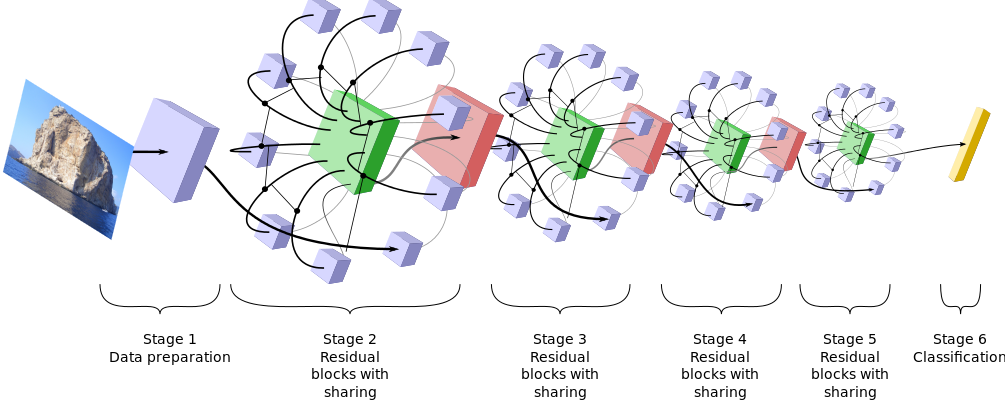ShaResNet: reducing residual network parameter number by sharing weights
Deep Residual Networks have reached the state of the art in many image processing tasks such image classification. However, the cost for a gain in accuracy in terms of depth and memory is prohibitive as it requires a higher number of residual blocks, up to double the initial value. To tackle this problem, we propose in this paper a way to reduce the redundant information of the networks. We share the weights of convolutional layers between residual blocks operating at the same spatial scale. The signal flows multiple times in the same convolutional layer. The resulting architecture, called ShaResNet, contains block specific layers and shared layers. These ShaResNet are trained exactly in the same fashion as the commonly used residual networks. We show, on the one hand, that they are almost as efficient as their sequential counterparts while involving less parameters, and on the other hand that they are more efficient than a residual network with the same number of parameters. For example, a 152-layer-deep residual network can be reduced to 106 convolutional layers, i.e. a parameter gain of 39\%, while loosing less than 0.2\% accuracy on ImageNet.
PDF Abstract



 CIFAR-10
CIFAR-10
 CIFAR-100
CIFAR-100